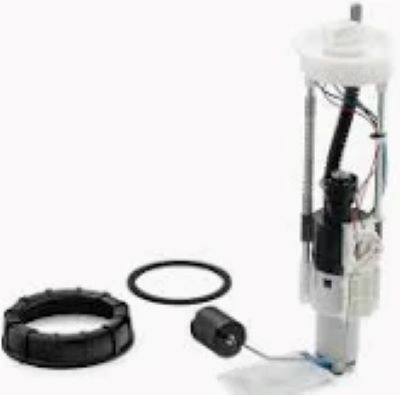Fuel pumps can also be operated in extreme cold; however, effectiveness is reduced due to fuel flow consistency and the protection of electrical components. As such, standard fuel pumps will work within a broad range of temperatures, typically from -40°F to 185°F. Outside of this temperature, however, well below the freezing point, unique issues can arise-especially if moisture collects in the fuel system-since ice blocks fuel lines and filters to restrict or block flow, creating potential strain on the pump.
One of the most important things that there is to be concerned with when it comes to extreme cold has to do with the viscosity of fuel. It can make gasoline and diesel fuel dense in low temperatures. Because these fuels are denser, they take greater effort and energy to pass through the lines. Where there is increased resistance, that can make the fuel pump work harder, and it could raise its current draw up as much as 20%. This could affect efficiency. With modern fuel pumps, this extra workload is usually not a problem, especially for newer vehicles. In high-mileage vehicles, however, the pumps become much more stressed and do require regular maintenance during cold climates. You will find replacing the older pumps with heavy-duty ones can extend reliability into colder conditions by making sure fuel flows even in harsh winter weather.

With electric fuel pumps, constant power flow is required. Cold weather reduces battery efficiency by about 50%, which in turn weakens the electrical supply to the fuel pump. Since power in-feed is inconsistent, the pump cannot maintain pressure, resulting in hard starts and rough idling. Technicians thus recommend continuing with a fresh battery and routine testing during the winter months for avoidance of such issues. A well-maintained battery, on the other hand, is found to support consistent performance from the pump. For instance, keeping a fully charged battery helps ensure that the pump receives the consistent 12-volt power it requires for reduced strain on cold starts.
The idea here is that some of the manufacturers have come up with cold-resistant fuel pumps or heaters on the fuel line, which heat up the fuel a bit before reaching the pump. Such attachments on heavy-duty trucks or vehicles used in the arctic prevent fuel thickening and over-straining on the pump. Such vehicles may also use heated filters that minimize the possibility of the entry of ice particles into the system. Extreme cold fuel pump durability studies have demonstrated that the application of prewarming systems can reduce fuel line blockage by 30%, while increasing the life of pumps under below-zero conditions by as much as:.
Regular application of winter-type fuel additives also contributes to good fuel pump performance. Winter fuel additives prevent gelling-a process that affects diesel engines most heavily but does affect gasoline flow, too. Additives reduce the risk of clogging and support consistent fuel delivery, protecting the fuel pump and ensuring reliable performance.
Proper selection of a Fuel Pump for resistance to cold weather, along with regular maintenance of the battery and fuel system, are essential to the avoidance of extreme cold impacts on fuel delivery.